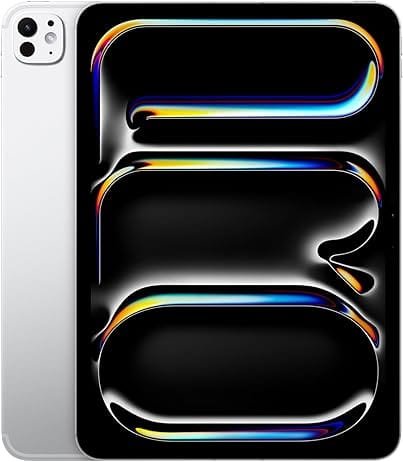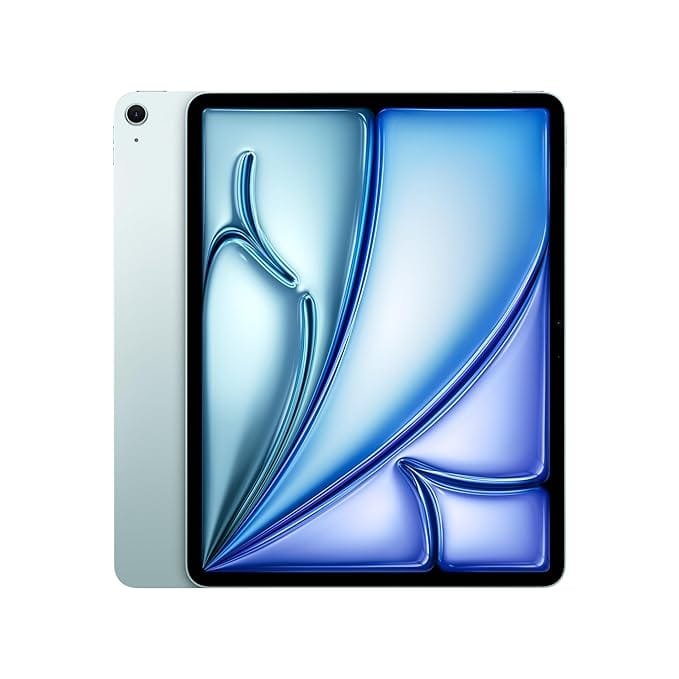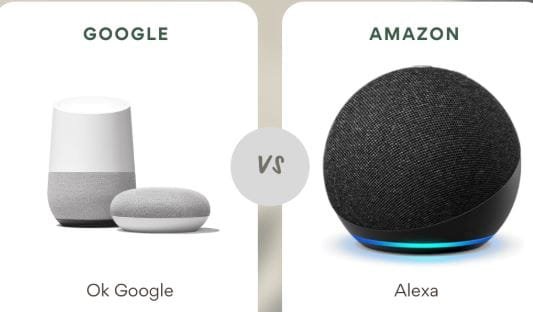Top 20 Trending Tablets of 2025
Tablets are fast changing, and with innovative new developments regarding their performance, design, and functionality. 2025 is going to be one of the great leaps for tablets in performance, design, and functionality. Whether you are a professional seeking productivity tools, a gamer in search of devices with high power, or just a casual user looking for entertainment options, the tablets of 2025 meet every need. Here’s a look at the Top 20 Trending Tablets of 2025: the latest devices that couple the most advanced technology with sleek designs and powerful features.
Apple continues to dominate the tablet market with its iPad Pro 2025. Featuring the new M3 chip, this tablet offers lightning-fast performance, impressive graphics, and enhanced AI capabilities. The display is brighter and more vibrant, with ProMotion technology for smoother scrolling. The iPad Pro is perfect for creative professionals, gamers, and anyone needing a tablet that can handle demanding tasks like video editing and 3D modeling.
2. Samsung Galaxy Tab S9 Ultra
Samsung’s Galaxy Tab S9 Ultra is another powerhouse. With a 14.6-inch AMOLED display, it delivers excellent video and is great for video consumption. The Exynos 2200 chipset along with the capabilities of 5G gives the Galaxy Tab S9 Ultra one of the top positions for the consumer who needs power and portability in one sleek package. Samsung has also upgraded the S Pen, which has made it a more responsive and precise tool for creatives.
3. Microsoft Surface Pro 10
The Microsoft Surface Pro 10 is a perfect combination of both laptop and tablet functionality. Equipped with an Intel Core i9 processor, 16GB of RAM, and the PixelSense high-resolution display, it has incredible productivity. Be it used as a tablet for drawing or working on it as a laptop, the Surface Pro 10 will do whatever fits your needs. Additionally, there’s an enhanced Surface Pen. The device supports the latest edition of Windows 12.
4. Lenovo Tab P12 Pro
Lenovo’s Tab P12 Pro stands out in 2025 for its 12.6-inch OLED display and impressive Dolby Vision support, providing exceptional color accuracy and contrast. With the Snapdragon 8 Gen 2 chipset, the tablet delivers top-tier performance for multitasking, gaming, and media streaming. Its slim design and long-lasting battery make it an excellent choice for those looking for a versatile and stylish tablet.
5. Amazon Fire HD 15
Amazon’s Fire HD 15 is an excellent budget-friendly option for those who need a reliable tablet for everyday use. The 15-inch display is perfect for streaming, reading, and light productivity tasks. Access to the Amazon ecosystem makes it a natural extension for Prime Video, Alexa, and Kindle users. The 2025 model has improved performance with smoother multitasking and better overall performance than its predecessors.
6. Google Pixel Tablet Pro
One of the most eagerly-awaited devices for 2025 is indeed the Google Pixel Tablet Pro, integrating the power of Google’s AI and machine learning into this tab. With the Tensor 3 chipset powering this tablet, the display happens to be OLED with glorious colors, it’s something to be awaited by each and every Android enthusiast, one hopes to shine through and through on Google services and Android update.
7. Huawei MatePad Pro 2025
The Huawei MatePad Pro 2025 is another standout device, particularly for those looking for a high-end Android tablet. It features a large 12.6-inch screen and is powered by Huawei’s custom Kirin 9000 chipset. The MatePad Pro excels at multitasking, allowing users to run multiple apps simultaneously without lag. The stylus is also highly precise, making it perfect for creatives and professionals.
8. Xiaomi Pad 6 Pro
Xiaomi Pad 6 Pro – Positioning in the mid-range tablet market, this one is very strong. With a Snapdragon 8 Gen 2 chipset and a 120Hz AMOLED screen and premium design, it’s an excellent performance at a competitive price. The AI-driven camera system with a robust battery supports all-day use.
9. Apple iPad Air 2025
The iPad Air 2025 is more affordable than the iPad Pro but offers excellent performance. It features the M2 chip, which delivers a lot of speed and efficiency. It has a 10.9-inch Liquid Retina display with True Tone, and the improved Apple Pencil 3 is responsive to writing and drawing. This is perfect for someone who needs a powerful tablet but doesn’t want to spend that much money.
10. Samsung Galaxy Tab A9
The Galaxy Tab A9 is an entry-level tablet that delivers a perfect balance of performance and affordability by Samsung. Its 10.5-inch display, along with a quad-core processor, makes it just what casual users need-a device for browsing, reading, and light entertainment. The tablet supports Samsung’s S Pen, making it an excellent choice for note-taking and sketches.
11. Microsoft Surface Go 4
The Surface Go 4 is a great value, offering compact yet powerful functionalities for anyone needing a serious tablet. Light and easy to carry, this Windows 12 10-inch tablet brings the full desktop experience into a very portable form. Ideal for students, professionals, or anyone on the move who requires a powerful device that could handle applications ranging from word processing to presentation and web browsing.
12. Lenovo Yoga Tab 13
The Lenovo Yoga Tab 13 is a versatile tablet with a unique design. It comes with a 13-inch screen and a rotating stand, making it ideal for movie watching or in various modes. Powered by the Snapdragon 888 chipset, the Yoga Tab 13 handles multitasking well and has solid battery life, making it an excellent choice for entertainment and productivity.
13. Oppo Pad 2
There’s also the Oppo Pad 2, which will be one of the highlights of 2025 when it comes to Android tablets. With a large 12.4-inch display and Snapdragon 8 Gen 2, users have nothing but great times when doing entertainment or work on their Android tablet. It has the slimmest design, coupled with color options that pop against aesthetics.
14. Asus ZenPad 8 Pro
As such, the Asus ZenPad 8 Pro goes directly for the high-end premium experience even with its attention towards gaming. It boasts an 8-inch display and the newest Snapdragon 8 Gen 3 chipset, making it ideal for high-end gaming. Also, it has a long-lasting battery. The advanced cooling system ensures smooth performance even after long periods of gaming.
15. Realme Pad X
The Realme Pad X is one of the cheapest tablets in 2025 without sacrificing quality. With its 11-inch display, Snapdragon 870 chipset, and decent battery life, the Pad X offers a good experience for media consumption and light multitasking. Its stylish design and budget-friendly price make it a great option for casual users and students.
16. Apple iPad Mini 2025
The iPad Mini 2025 is ideal for the movers as they want to maintain portability without losing any performance. A 9.7-inch Retina display and the powerful A15 Bionic chip will be reliable to complete daily tasks, games, and consume media. It can easily fit into a pocket and is apt for reading and browsing and casual use.
17. Samsung Galaxy Tab S9+
Galaxy Tab S9+ is one premium Android tablet that houses an AMOLED display screen of 12.4 inches, with fabulous color and deep blacks. Equipped with the Snapdragon 8 Gen 2, this tab performs well for various tasks such as gaming and multitasking, or simply producing creative work. Moreover, included with the S Pen to maximize its productivity, the tool really comes in handy while writing down the notes and sketching the diagrams.
18. Microsoft Surface Duo 3
The Surface Duo 3 is a foldable tablet with a unique dual-screen experience. It’s the perfect device for multi-taskers who can run many apps on separate screens simultaneously. It runs Windows 12 and is powered by the powerful Qualcomm Snapdragon chipset. This makes it versatile for work, gaming, or productivity.
19. Sony Xperia Tablet 10
Sony’s Xperia Tablet 10 offers a great multimedia experience with its 10-inch 4K display and Dolby Atmos audio. It’s perfect for those who want a tablet primarily for entertainment purposes. The device is powered by the Snapdragon 8 Gen 3 processor, ensuring smooth performance across tasks, from streaming to gaming.
20. TCL NXTPAPER 12
The TCL NXTPAPER 12 stands out for its green design and display technology. It uses the proprietary NXTPAPER technology of TCL, which reduces blue light and is easier on the eyes. It is very good for reading, note-taking, and general productivity. With a decent battery life and an affordable price, the NXTPAPER 12 is a strong contender in the budget-friendly tablet market.
Conclusion
As we reach 2025, the Top 20 Trending Tablets of 2025 showcase the exciting direction that tablet market is taking. From heavy-duty devices like the iPad Pro 2025 and Galaxy Tab S9 Ultra to more budget-friendly yet feature-rich devices like the Realme Pad X, there is something in it for everyone. These devices offer improved performance, sleek designs, better battery life, and the latest technological advancements, making 2025 an exciting year for tablet enthusiasts across the globe. Whether you’re looking for a tablet for work, play, or creativity, the best tablets of 2025 will offer exactly what you need.







